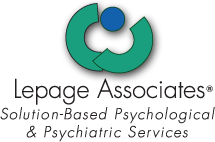I remember being in my first year of therapy practicum at a local community mental health center with a supervisor who, well, let’s say was not my most favorite supervisor of graduate school. He was a bit gruff, incorrigibly stern, and often times rudely sarcastic. There are many things I would like to forget about the year I spent under his supervision, but one thing will really stick with me as a psychologist, spouse, friend, child, and parent – it’s okay to be sad and it’s okay to let others be sad. The lesson started when I played an audiotaped recording of a session for him (of note, I had client permission to do so as part of my training). The client was audibly crying, there was a pause, you could hear some movement and then I stated, “Here you go.” He asked me what had happened and I explained I had reached over to give the client a tissue. He just looked at me. Blank. After what seemed like an eternity he finally asked, “Why would you do that?” What? Why? Is he serious right now? I was fuming on the inside, but hopefully didn’t let it show. I repeated myself and explained the client was crying and I had handed her a tissue so she could wipe her face. He asked if the tissues were visible and within reach of the crying client. Yes, they had been. “Then why” he asked “did you hand one to her?”
From my perspective, I was being polite – doing what my mother raised me to do. From his perspective, I was inadvertently telling her it wasn’t “okay” for her to be sad. She should clean herself up. She should wipe the tears away from her face. I understood his point, I did. I think it might be a touch overboard, but nonetheless, an important point to learn as a budding psychologist, and even as a friend, partner, parent, child, for any and everyone really. It seems that all too often we unintentionally send messages that it’s not good, not okay, for someone to be sad. How many times have you heard someone say, “It’s ok, don’t be sad,” or “Don’t cry, everything will be alright?” Some emotions are more difficult to acknowledge and manage than others, especially emotions with a negative or painful connotation, such as sadness and anger.
I recently watched the new Disney/Pixar hit Inside Out, a film about Riley, a young, athletic girl whose family relocates from Minnesota to San Francisco. Although Riley is the central human character, the true stars of the film are Joy, Sadness, Anger, Fear, and Disgust, Riley’s personified emotions who operate Headquarters (her brain) and manage her current emotional state and interpretation of events, which ultimately become her memories, via a switchboard type station that translates her thought process into behaviors. Headquarters is mostly operated by Joy, a spunky, pixie-ish character who lives up to her name, while Sadness, Anger, Fear, and Disgust play supporting roles. Not long after relocating, the role Sadness plays increases as she mopes around Headquarters, with her woe-is-me demeanor and a defeated tone of voice. She begins touching Riley’s once happy memories, shifting them from a golden glow to a blue glow. In a panic to keep Riley’s memories intact, Joy runs around monitoring Sadness to keep her from touching too many memories. Eventually, Sadness runs off and Joy follows to retrieve Riley’s Core Memories, which ultimately impact her Islands of Personality. In their absence, Anger, Fear, and Disgust are left to manage Headquarters. You can imagine how this part of the story plays out, with a young girl being “operated” by Anger, Fear, and Disgust! Riley becomes curt when speaking to her parents, doesn’t enjoy the activities she previously loved, and eventually runs away from home for a day. In a series of fortunate events, Joy and Sadness make it back to Headquarters in time for Riley to realize her state of sadness and prompting her to return home to her parents, where she collapses in a loving, tear-filled embrace.
Moral of the story – it’s good to be happy, but it’s okay to be sad, too! In fact, it’s not only okay, but actually important for helping people realize their own mental state and being able to communicate that to others. In Inside Out, Riley’s situation begins to significantly change once she is able to express her sadness to her parents. So, instead of telling people, “It’s okay, don’t be sad,” we should be helping them realize they are sad, let them be sad, and help them work through it. After all, when we try to subdue a particular emotion other emotions soon take over, much like the movie, and often create a bigger problem than we started with!
Here are some quick tips for helping children identify and communicate their emotions:
- Increase your child’s emotional vocabulary. Help them recognize their own emotions by labeling them. If your child is crying, interpret “Billy, you are sad because daddy left for work and you won’t see him until dinner time.”
- Parents, label your own feelings. “I’m feeling frustrated because I can’t get this computer to work.”
- Help children recognize the emotional state of another person. Using books, feeling charts, and emotion faces will help your child recognize the behaviors associated with various emotional states. Ask them how they think Farmer John is feeling in this picture where his arms are crossed over his chest and his brow is furrowed. Then have them point out behavioral cues that led them to identify Farmer John is feeling angry.
- PRAISE your child when he or she communicates what emotion they are experiencing. Teach them emotions, all of them, are good! And, help them express their emotions in a socially-acceptable manner.
